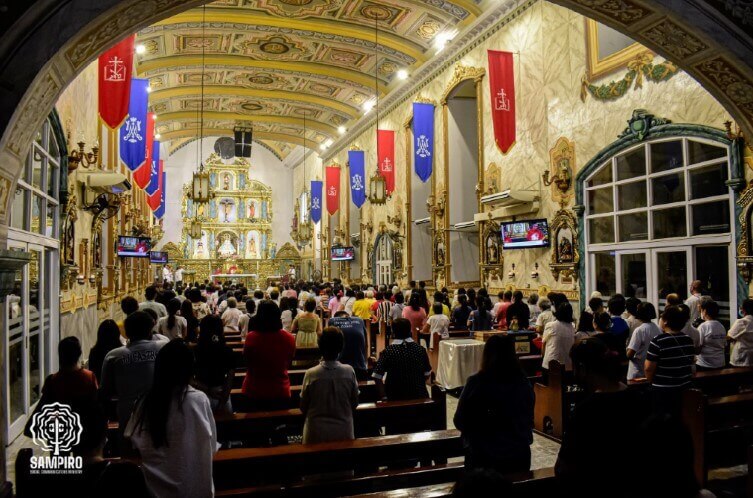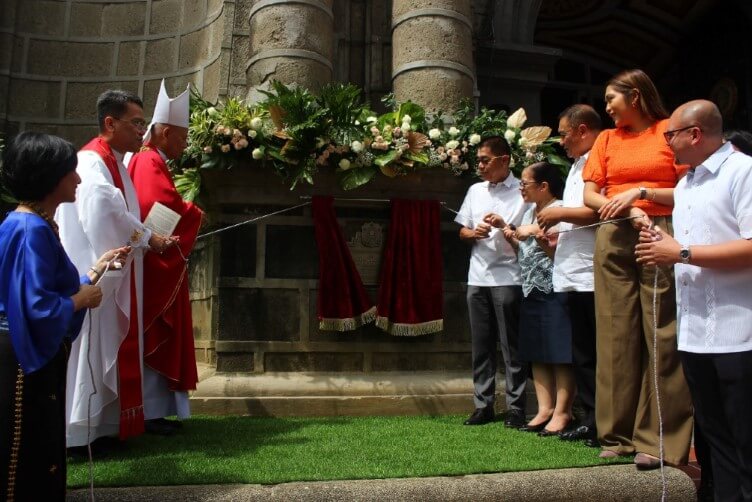
The historic Saints Peter and Paul Parish of Makati has been marked as an Important Cultural Property (ICP) of the Philippines, allowing the four centuries-old church to seek public funding for its conservation.
On the feast day of Saints Peter and Paul on June 29, 2023, a ceremony was held to celebrate the title and unveil the marker placed on the facade of the church. Formerly known as San Pedro Macati when it was erected in 1620, the parish church is Makati’s oldest and is located at the heart of the city in Poblacion.
NMP’s chief archaeologist Dr. Mary Jane Louise Bolunia stated during the unveiling event, “The declaration of this beautiful church is also a way of saying there is so much to discover about Makati’s history and heritage.” She added, “This alone is a testament to Makati’s importance to our life as a nation.”
According to the National Cultural Heritage Act of 2009, Important Cultural Properties are entities with “exceptional cultural, artistic and historical significance to the Philippines”. NMP and the National Historical Institute (now NHCP) are the government bodies responsible for bestowing this title. To be eligible, these entities have to fulfill any of the following: prove that they were created by a Manlilikha ng Bayan, National Artist, or a national hero, are archaeological ethnographic materials and marked structures, are old buildings and archival documents of at least 50 years of age.
Important Cultural Properties are adorned with official heritage markers and may acquire public funding for conservation purposes. Overall, the title is one of the six categories of Philippine cultural properties, with the others being national cultural treasures, world heritage sites, historical shrines, historical monuments, and historical landmarks.

Over 20 years after the first Franciscan missionaries arrived in Makati, the Jesuits constructed the San Pedro Macati Church through a donation from Capitan Pedro de Brito, the Alferez General of Manila. Through the years the church was ravaged by wars and needed restorations, but remained the mother church of the city. In 1718, the image of the Virgen de la Rosa from Mexico was brought to the parish by Fr. P. Delgado, SJ. Though it was lost in the 1899 Revolution, worshippers believed that a strand of the Virgin’s real hair was in the statue. Beyond this, the church has been an instrumental part of the Sangley Rebellion and the Philippine-American War.
A historical marker was placed at the church in 1937 by the Philippine Historical Research and Markers Committee, the precursor to the present National Historical Commission of the Philippines (NHCP), declaring the church a historic and heritage site. It was only in 1965 when it was renamed the Sts. Peter and Paul Parish.
https://twitter.com/scvannasummer/status/1678736407387582464
The Philippines’ Important Cultural Properties include the Callao Cave of Homo Luzonensis in Cagayan and the Bahay na Tisa in Pasig City.
SEND CONGRATULATIONS in the comments below to the people of Makati for the declaration of Saints Peter and Paul Parish as an Important Cultural Property of the Philippines!
Good News Pilipinas is a Lasallian Scholarum Awardee. TELL US your good news story tips by messaging GoodNewsPilipinas.com on Facebook, Twitter, or Instagram, or e-mailing editor@goodnewspilipinas.com










